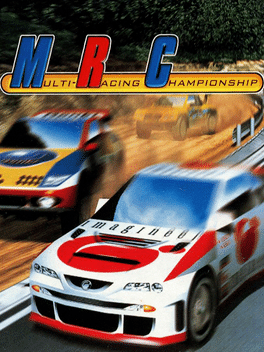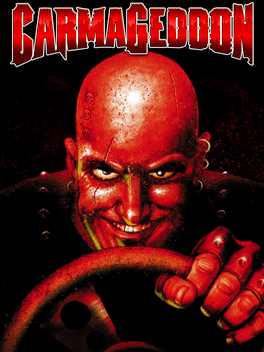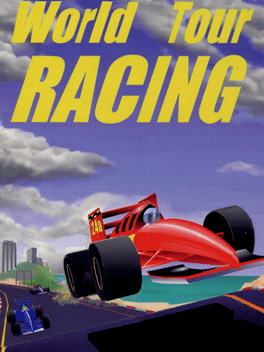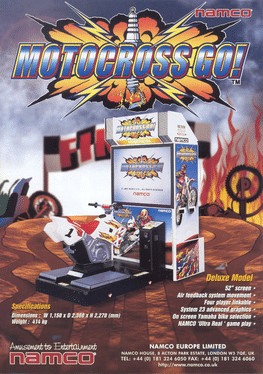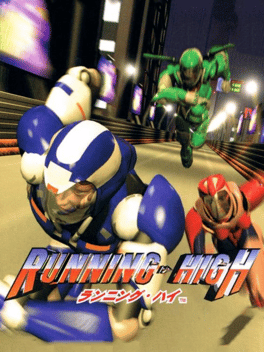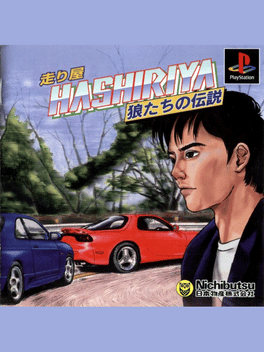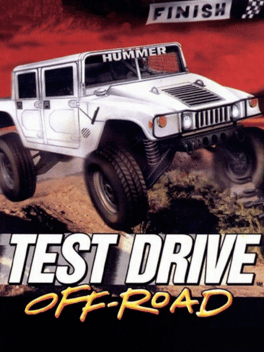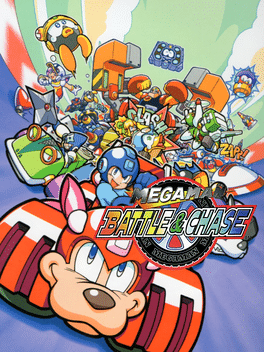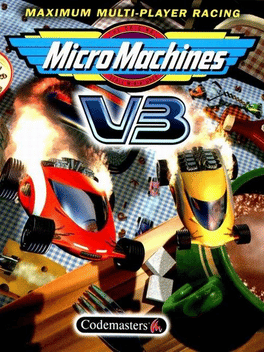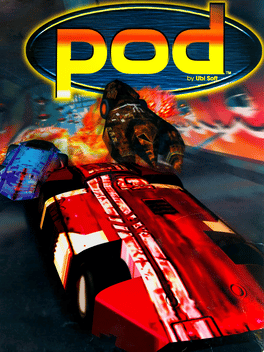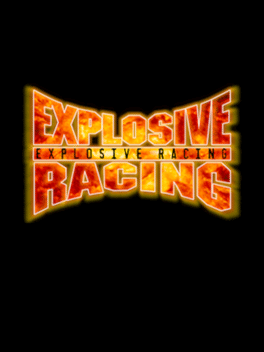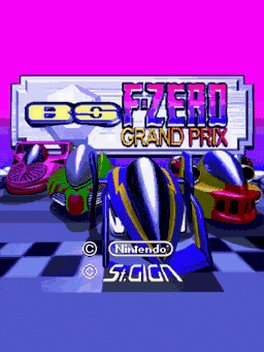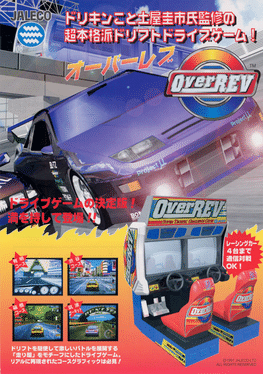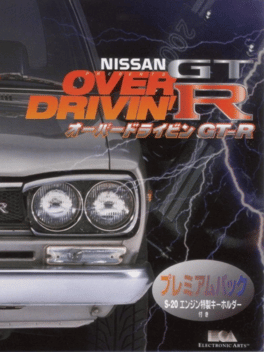New Racing Games - Page 125
-
MRC: Multi-Racing Championship
1997
Featuring up to 10 chooseable cars (many which open up later in the game), and three courses (plus mirror courses), Multi Racing Championship's biggest draw is the splendidly realistic feel of the cars themselves and the well designed courses on which they drive. The cars range from 4X4s, trucks, and off-road racers to slick street cars, Lamborghinis and the like. While initially it may seem like there is a deficit of courses, in fact, the multi-terrain courses contain mini-courses within each one. For instance, at least three times in each course, you will have the choice to take two different road directions -- either rough dirt track or snow-laden road, ot a slick but usually longer street course. Each car handles terrains differently, and some, like the trucks, obviously handle the off-roads better than others, but you can also modify your street car to handle dirst roads well, too. -
Carmageddon
1997
Carmageddon
1997
star 7.9Take the wheel as Max Damage as you plow scores of vehicles unlucky enough to be in your way in Carmageddon, an action racing game. Your soundtrack will be the sound of crunching metal, the splatter of motor oil on the windshield, and the screams of skidding tires. With a white-knuckled grip on the wheel, you'll have the choice of 23 crash mobiles (from a terrifying monster truck to a high octane Dragster) and 30+ levels of hellish fury and motorized terror. -
World Tour Racing
1997
World Tour Racing
1997
World Tour Racing was the first racer available for the Atari Jaguar CD. Earlier cartridge games, like Super Burnout and Checkered Flag were received with mixed reviews, which created some excitement for the release of WTR. Gameplay includes customizable cars, seven different racing views, and surprisingly intelligent AI. World Tour Racing also features a damage system -- too many mid-race collisions will force drivers to the pits. -
Motocross Go!
1997
Motocross Go!
1997
Motocross Go! was a motocross racing game produced by Namco in 1998. Choose any motocross track to race on and race a set amount of laps before time runs out. -
BS F-Zero Grand Prix 2: Practice
1997
BS F-Zero Grand Prix 2 is the direct sequel to the original F-Zero game released for the Super Famicom via the Satellaview. Two versions were released - a non-SoundLink game and a SoundLink game. The original non-SoundLink version was released as BSF-Zero 2 Practice (BS F-ZERO 2 プラクティス) on June 1, 1997 (although the title screen remained the same). It contained the four courses first seen throughout BS F-Zero Grand Prix (a Satellaview remake of the original), along with a new course called Mute City IV. -
Running High
1997
Running High
1997
To race at speeds over 200km per hour! Full 3d polygon radical fighting super race. The runners' mechanical parts called "Component Muscle" creates exhilarating races. High jump between characters and use your punch and slide to create a dynamic race experience. -
Hashiriya: Ookami-tachi no Densetsu
1997
A neat drift-racing game ala Initial D that lets you choose among 15 cars and 5 courses. You can race against up to 5 cars in the arcade mode and there's also a story, time trial and practice mode (where you can train tricky parts of courses). Graphics and sound are passable but unremarkable (you can listen the 12 redbook tracks on your stereo) and the handling is a bit hard to get into at first as it feels a bit stiff with a digital pad. I'd recommened using the Negcon, which helps quite a bit. An obscure racing wheel, the "Cockpit Wheel" (SLHP-00024) is also supported. Sadly no multiplayer option, but all in all I'd say it's a nice little racer, albeit not quite up on par with the greats (Side by Side Special, Touge MAX G). -
Test Drive: Off-Road
1997
Test Drive: Off-Road
1997
It's time to wander off the beaten path with Test Drive Off-Road, the first off-road racing game in the popular driving series. Players can hit the road with one of four licensed 4x4 vehicles, each rated in speed, handling and acceleration: a Hummer, Land Rover Defender 90, Jeep Wrangler and Chevrolet K-1500 Z71. Once you select a vehicle, you'll be able to choose from four color schemes, enter your name and compete in a Mixed League or Class League. Depending on the league, you'll race against other vehicles of the same class or challenge all classes for one of six different cups. Nine camera angles let you change perspectives on-the-fly, including a dashboard view complete with a moving steering wheel! There are twelve 3D tracks in total, covering such terrain as dirt, snow, sand and rocks: County Road, Jump Jet, Sand Speedway, Ridge Runner, Devil's Elbow, Winter Wonderland, Dirt Dash, Pharaoh's Curse, Sand Trap, Under Construction, Snowball Express and Pipeline Way. A Practice mode will let you learn the ins-a -
Mega Man Battle & Chase
1997
It's robot mayhem at the Battle & Chase tournament! Dr. Wily is trying to take over the tournament with his army of Robot Masters, and now Mega Man has to enter to try and save the races! Choose your racer and head out on the tracks, and if you win, you'll get to steal parts off your opponent's cars, and eventually, you'll race against the mad Dr. Wily himself! -
Micro Machines V3
1997
Micro Machines V3
1997
star 8.8Micro Machines V3 takes the immensely popular miniature-scale racing series to a new level by adding weapons and power-ups to the fray. Now you can grab turbo charges for bursts of speed or blast away opponents with grenades and force-fields. For the first time on a portable system you can still drive all of your favorite Micro Machines vehicles on all the classic tracks such as the pool tale and sand-box, but now you can do it with an attitude! Features 48 courses - breakfast table, school desk, science lab, beach, restaurant, garden, pool table, etc. Power-ups to blitz the opposition include: hammer, mines, force-field, etc. Collect, test and gamble special prize cars for up to 32 vehicles -- including monster trucks, transmutable cars, futuristic cars which are all faster than before. -
POD
1997
POD
1997
star 7.9POD is a Futuristic Racing by Ubisoft in 1997. It was designed with the Intel MMX processors in mind and was included as a box set on many computers. A retail version called pod 2.0 was also released with support for 3Dfx voodoo, S3 virge and ATI -
Rally Cross
1997
Rally Cross
1997
star 6.7Rally style racing lets you perform power slides, end-over-end crashes, rolling your car, crashing into others and forcing cars off the road -- everything damages your vehicle! Compete in a season or tournament mode with three difficulty levels and four perspectives. So what are you waiting for? Rally on! -
Choro Q 2
1997
-
Hang Pilot
1997
-
Explosive Racing
1997
Explosive Racing
1997
In the beginning, you start off with only two tracks, six vehicles, and the Practice and Championship modes. By successfully clearing the game modes in specific ways, you can unlock more tracks, vehicles and additional game modes. There's also a two player mode which can be accessed using the PlayStation Link Cable. -
BS F-Zero Grand Prix
1997
BS F-Zero Grand Prix
1997
BS F-Zero Grand Prix is a remixed version of the original F-Zero released only in Japan for the Satellaview attachment of the Super Famicom. It was released in four parts from late-1996 to early-1997, and was a SoundLink title where an announcer provided commentary during gameplay. As the original game was only three cups, a fourth cup called Ace League was added. Each cup had the courses in a slightly different order, and a new course not found in the original game served as the fifth track (with Mute City I being reused once at the beginning of the final week). -
Side by Side 2
1997
-
Over Rev
1997
Over Rev
1997
Over REV is a 1997 racing game developed by Jaleco for Sega's Model 2 arcade board. It features four nicely rendered tracks across the Greater Tokyo Area. Although it has some serious issues with driving and collision physics, if you stick with the game long enough to overcome its intricacies, it can be pretty rewarding. Like Jaleco's other Model 2 racer, Super GT 24h, you'll want to use an automatic transmission.
